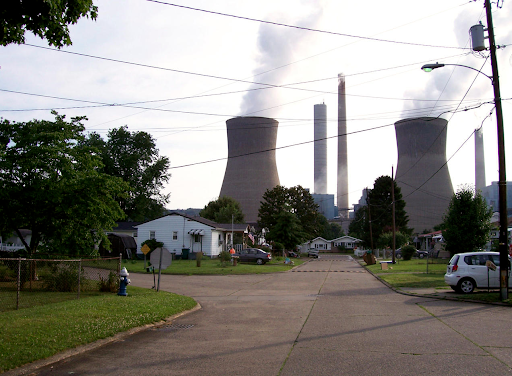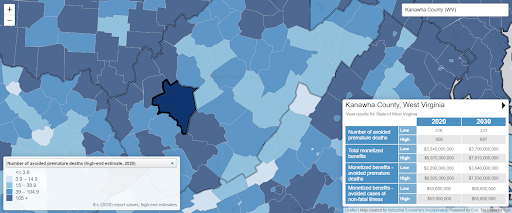WV v. EPA: A Win for Polluters, Loss for the Public
by Morgan King, climate campaign coordinator
On the final day of June, the Supreme Court issued a decision on the case, West Virginia v. Environmental Protection Agency (WV v. EPA). In the 6 to 3 opinion, the high court held that Congress did not grant the EPA in Section 111(d) of the Clean Air Act the authority “to devise emissions caps based on the generation shifting approach the agency took in the Clean Power Plan.”
American Electric Power’s John Amos coal-fired plant in Winfield, West Virginia. Wigwam Jones via Flickr, CC BY-NC-ND 4.0
If you still have more questions about what WV vs EPA means, here are two helpful question and answer articles by ProPublica and Resources for the Future.
So, what does this mean exactly? The EPA can still regulate greenhouse gas emissions and other forms of air pollution, but it did reduce the ability of the agency to regulate emissions from power plants. The ruling said that EPA can’t require existing power plants to limit emissions via electricity generation shifting to cleaner energy sources. In the United States, coal-fired power generation contributes to over half of carbon dioxide emissions in the electricity sector despite only representing one-fifth of electricity generation in the country in 2020. What’s most concerning is the precedent the ruling could set for future court decisions preventing federal agencies from protecting Americans.
It’s worth noting how the Clean Air Act has benefited our country since its creation. A Natural Resources Defense Council report suggests that the Clean Air Act saves as many as 370,000 lives per year and produces $3.8 trillion in annual economic benefits. That economic value is 32 times greater than the cost of creating the regulations. Just in Kanawha County in 2020, the number of avoided premature deaths due to the Clean Air Act was estimated to be at least 316.
This map by the Natural Resources Defense Council and Industrial Economics Inc. shows the benefits from the Clean Air Act down to the county level.
That leads to two questions. What’s next for environmental protection and regulation? What should happen to ensure that our country reduces emissions to meet climate goals?
This decision, while certainly a loss for environmental and human protection, focused solely on a specific regulation in the Clean Air Act. It was strange the Supreme Court even took up this case because it focused on a law that was not even in effect nor was it expected to go into effect. The ruling and its reliance on the “major questions doctrine,” which requires that Congress give explicit power to an agency in order to regulate matters of national significance, could open the possibility to other agencies being challenged from doing their jobs of offering expertise to inform regulations that protect people.
The ruling on WV v. EPA reinforces the need for Congressional action to reduce greenhouse gas emissions to protect public health and limit global warming to avoid the worst effects of climate change. If you’re a West Virginian resident, you can contact Senator Joe Manchin and Senator Shelley Moore Capito with this form and ask that they take science-based action to address climate change and its impacts. If you live outside of West Virginia, you can look up your representatives here and your Senators here to contact them and demand urgent action on climate change via emissions reduction.






